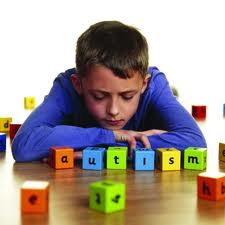
It’s time to commence with another school year. Spare a thought for the trepidation faced by students harassed for having disabilities.
The following is a great piece on this very issue written by Chester Goad courtesy of The Huffington Post:
Typically going back to school means seeing old friends and making new connections, and while most kids are nervous about going back to school, some kids are actually terrified.
Research suggests that between 150,000-200,000 students are bullied in our schools every day. Many school systems have even added hotlines and “Student Resource Officers” (SRO’s) who can help identify and prevent bullying. Still bullying happens, and statistics show that students with disabilities are more at risk. In fact, anyone who looks different, acts different, or believes something different from whatever is the local cultural norm is a target.
Not only do students with disabilities sometimes look different from non-disabled peers, but students with certain disabilities like dyslexia or dysgraphia also learn differently, and students who learn differently often receive additional resources or extra help which can bring unwanted attention from potential bullies.
Growing up is hard but growing up with a disability brings a different set of challenges. Social stigma, misunderstandings, or lack of awareness affect the learning environment when educators, parents, and other students aren’t paying attention. What does all this mean?
It means families should talk more. It means we must be more intentional in our efforts to address the problem without causing more trouble for the kids who are prone to be bullied, and without arming bullies with information that makes them wise enough to avoid intervention. Yes, it’s that complicated.
In 2013, the increasing number of students with disabilities being bullied prompted the U.S. Department of Education to release a “Dear Colleague Letter” reminding schools of their responsibility to provide a bully-free education, and to implement specific strategies to effectively prevent or stop bullying of all students, but especially those with disabilities.
Parents of students with disabilities or any sort of difference should be vigilant and listen to their kids when they’re discussing school. Pay attention to changes in behavior, especially aggression and meltdowns. If your instinct tells you there may be an issue with bullying, talk with teachers or other adults and ask about changes in behavior or attitude. It’s a challenge for us as parents not to want to handle things completely on our own, but parents should avoid confronting others about bullying until they have all the information, and it’s best to leave the confrontation part to the school. Discuss the issues with teachers or administration. They may be able to give you valuable insight before you talk with the other parents or take your concerns to a different level.
Some adults are inclined to let bullying go assuming that kids will just “work it out,” and some students do work out one-time incidences, but sadly, true bullying involves a pattern of inappropriate behavior and when left alone can worsen circumstances for everyone involved. In some instances, students may truly not understand that their actions are being perceived as bullying. They may simply be seeking attention. However, in other situations they know exactly what they’re doing. Parents should never just “let it go” or trust the situation to work itself out.
Talk to your kids, and listen. Listen to what they’re saying, and to what they’re not saying.
Student suicide rates are on the rise. Quick, proactive communication and education is key, and could save lives.
The best way to prevent students from becoming bullying statistics is to know your students and their disabilities, understand the law, encourage peer intervention (because intervention by peers is considered the most powerful deterrent to bullying), and to foster open positive relationships between parents and schools.
Going back to school is always going to be a little nerve wracking. Kids will always worry about classes, friendships, and keeping up with the latest fads. But they should never have to worry for their safety.
Click on the link to read my post on What This Teacher is Accused of Doing to an Autistic Boy
Click on the link to read my post on School is the Place to Make Better Connections with Our Disabled
Click on the link to read my post on Dreams Come True When People Show they Care
Click on the link to read my post on Hitchens: Dyslexia is NOT a Disease. It is an Excuse For Bad Teachers!










